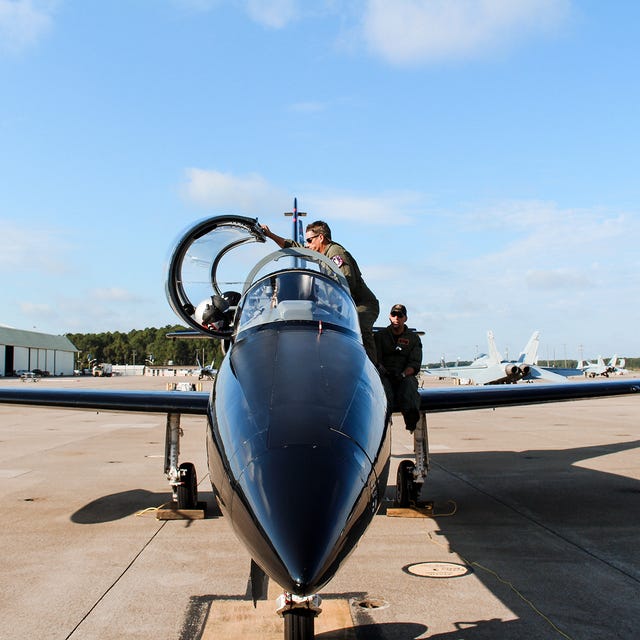Most will encounter a g-force, if at all, on a rollercoaster. Symptoms of encountering g’s include “graying out,” or passing out, due to blood flowing out of your brain and into your lower extremities. If you’re a fighter pilot, encountering and fighting g’s is an occupational hazard, and fighting against them is second nature. For instance, retired Naval Officer Mark “Crunchy” Burgess, who’s been flying for over 26 years, is so accustomed to pulling g’s that he’s less concerned about fighting them than navigating dangerous situations like landing on an aircraft carrier in inclement weather, or flying through the clouds while being shot at. He and other seasoned pilots, he says, “Tend to just hold our breath and squeeze our stomach, pushing the blood back into our head when we start to feel the effects of the g’s coming on.” But not everyone is so accustomed to g’s. Just before we flew in an L-39 jet with him, he taught us “the right way to do it,” which is an unclassified Anti-G Straining Maneuver (AGSM) called the Hook Maneuver.
The Hook Maneuver was unclassified in 1990 in a response to civilians’ desire to know how these pilots keep their cool in the cockpit. The resulting report by the Naval Air Development Center explains that the Hook Maneuver “Simply emphasizes the proper mechanics for physiologic enhancement of tolerance” in a way that is “easily understood, rapidly mastered, and easily remembered.” You may never pull as many g’s as Crunchy has, but you may find yourself in a situation where you’ll need to fight against a G-force, or simply keep yourself from passing out after standing up too quickly, and this technique will help.
Anticipate the G. Pay attention to pressure levels; when you feel the downward force of the g’s, get ready to start your AGSM.
Tense your muscles. G-forces push down, pooling your blood in your abdomen and legs. Tensing your muscles will help keep the blood pumping in your heart and brain.
Start the Hook Maneuver. Breathe in, and begin to say the word “Hook.” You should feel your glottis, the opening between your vocal cords, at the back of your throat. About three-quarters of the way through the word, before hitting the “K” sound, close your glottis and hold for 2.5 to 3 seconds.
Exhale, finish the word “hook,” and inhale. Strongly exhale and finish the word “hook,” drawing out the “K” sound. Then inhale and get ready to repeat. This step should take no more than one second — just enough time to let blood flow into your heart and chest, but not enough to allow the blood to leave your brain.
Breathe in and repeat. Continue the technique until you return to a low pressure level.


Leave a Reply